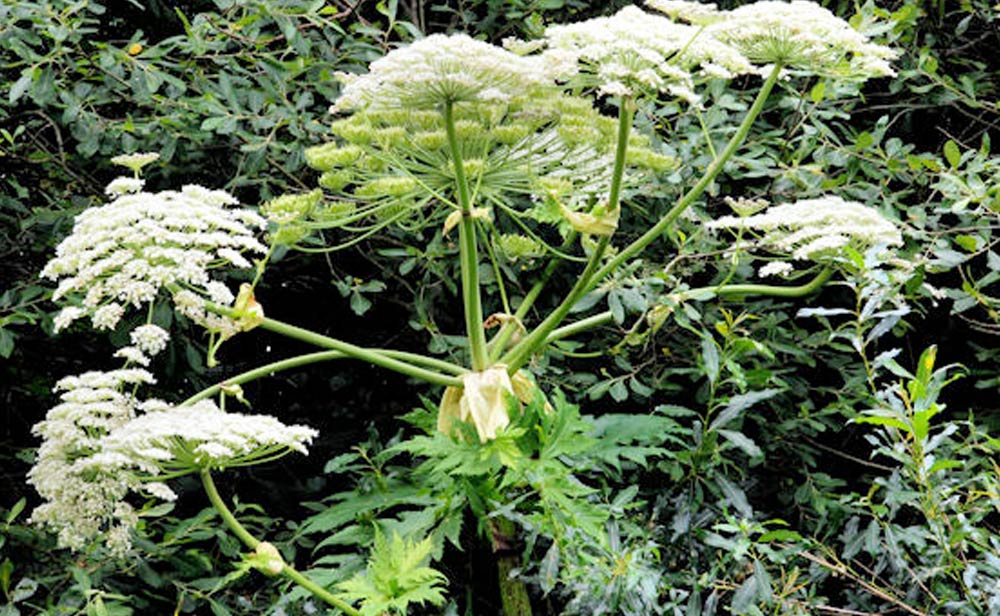Giant Hogweed

Giant Hogweed was introduced into North America in the early1900s. Its native range is in Central Asia, although it now can be found in the United Kingdom, Australia, Europe, parts of Canada and the United States. It was most likely spread to new areas as an ornamental because its unique two foot diameter flowers and giant size make it attractive to many gardeners.

Giant Hogweed is seen as a major health hazard that is comparable or worse than poison ivy, poison oak, and poison sumac in terms of its potential to harm humans. The sap from Giant Hogweed can cause a severe skin reaction known as photo-dermatitis or photo-sensitivity. After coming in contact with the plant’s sap,the skin will begin to blister when exposed to sunlight. This skin reaction canoccur up to two (2) days after initial contact. In worst case scenarios when sap from the plant enters the eyes, it can lead to temporary or even permanent blindness. If contact with the plant does occur, the area(s) which were contacted should be washed immediately, kept out of direct sunlight, and you should seek medical advice as soon as possible.
Giant Hogweed can also be highly invasive under the right conditions. Like most invasive plants, it does very well in disturbed sites,and on the edges of water sources where its seeds can disperse easily. Large populations of Giant Hogweed have beenknown to form from just a single plant because shoots arising from the plant’sroot system and they produce a lot of fertile seeds can give rise to many offspring.

Giant Hogweed has already been identified and detected in many counties in Michigan. Proper identification is a major factor in determining if the plant is present. Many plants such as wild parsnip, angelica, Queen Anne’s lace, and cowparsnip are misidentified as Giant Hogweed because of their similar appearance.Learning to properly identify invasive plants is a highly important step in monitoring their populations, and preventing their overall spread.
For more information about Giant Hogweed please check out the links below